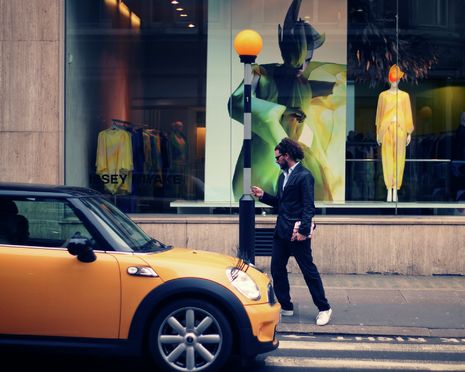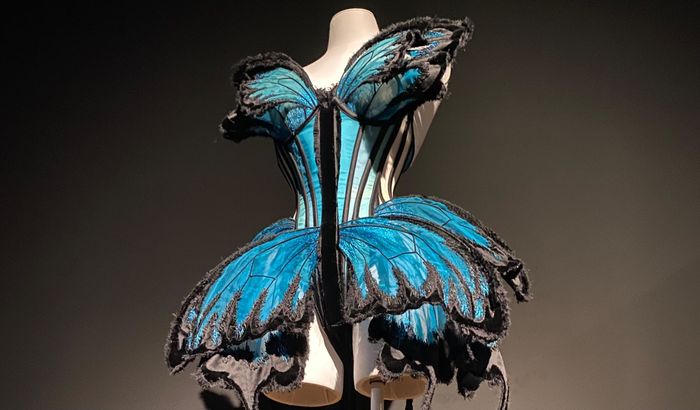Remembering Issey Miyake
Fashion Editors Anna Chan and Kasia Truscott pay homage to the legendary Japanese designer and his signature pleat-loving legacy

Clothes are two-dimensional pieces of fabric until they are worn on the body. Pleats spring to life after being squashed between layers of paper in a heat press; the body makes it swell into dimension and fabric is animated into motion because of the body.
This was the guiding credo of groundbreaking designer Issey Miyake, who passed away on 9th of August at the age of 84. Born in Hiroshima, Japan in 1938, Miyake wanted to become a dancer as a child and studied graphic design at university in Tokyo. After a short stint in New York in 1969, he founded the Miyake Design Studio in 1970 back in Tokyo to create high-end womenswear. He leaves behind Issey Miyake Inc., the company behind the incredibly successful fragrance L’eau d’Issey and revered brands such as Homme Plisse, Bao Bao and Pleats Please.
Miyake's designs are perfectly captured by 13-year long collaborator Irving Penn in exquisite simplicity and motion.
Dance remained pivotal to his creative life: ease of movement and flexibility were the objectives behind his experimentation with pleating in the late-1980s. Miyake’s novel technique involved cutting, sewing and assembling the garment before rather than traditionally after pleating the fabric, resulting in exquisite yet durable ready-to-wear clothing well-suited for dancers. He created costumes for the Ballet Frankfurt and often collaborated with dancers such as Momix and Daniel Ezralow. “I wanted the clothes to move when people moved,” Miyake once stated: “The clothes are also for people to dance or laugh.”
“His most commercial pieces [...] glimmer with an air of innovative intelligence”
This pioneering innovation eventually yielded Pleats Please, founded in 1993 and establishing Miyake as a household name. He preached an exact, straightforward simplicity and was obsessed with the art of creating garments that were airy, practical, and famously never creased. Renowned for its elegance and freedom of movement, Pleats Please has been worn by the likes of Solange Knowles, Doja Cat and Joni Mitchell in the last 30 years of its making.
What makes the clothing of Issey Miyake so beloved is how he married the ostensible extremes of beauty, avant-garde and functionalism. In his runway collections, Miyake introduced experimental silhouettes (such as the 1994 ‘Flying Saucer’ dress) and used innovative materials such as washi paper, horsehair and raffia. He collaborated with artists such as Yasumasa Morimura for FW96—printing beautiful figures onto his pleats—and Cai Guo Qiang in 1998, with textiles imitating the images of fabric burned by firework explosions.
“He leaves behind a legacy of innovative grace, and infinite possibility”
His most commercial pieces—a pleated top and trousers, or trademark ‘Bao Bao’ bag—are simple, wearable and elegant. Yet, they glimmer with an air of innovative intelligence. Steve Jobs’ uniform was simple: a black mock turtleneck, Levi’s 501 jeans, and New Balance sneakers. But Jobs wasn’t known to wear just any turtleneck—he was known to wear Miyake turtlenecks. Jobs personally commissioned Miyake in the late 1980s to design his now iconic Apple ‘uniform’, intending to divert attention away from Jobs’ multi-billionaire status with sleek, simple subtlety. Miyake designed hundreds of turtlenecks in a range of neutral colourways for the tech-revolutionary, replacing the globally recognised corporate lookbook of suits and ties with a casual dose of the avant-garde.
Perhaps what drew Jobs and Miyake together was the centrality of technology to their missions to design with both beauty and function. Miyake’s innovation and precision allowed him to create garments that were functional, flexible, easy, unwasteful (he often cut square patterns to avoid wasting fabric), exquisitely made, and incredibly beautiful all at the same time. Although Miyake denied his work’s status as art (“What I’m doing is really clothing. I’m not doing sculpture”), this did not mean he denied clothing as a craft that requires sophistication, consideration and innovation. He championed the user rather than personal artistic expression. He was, in his own words: “interested in making clothing that is worn by people in the real world”.
This ethos is epitomised by A-POC (“a piece of clothing”), a collaboration with textile engineer Dai Fujiwara. The duo developed a revolutionary design technique where a tubular piece of cloth is produced from a pattern programme fed into a knitting machine. Crucially, the customer has ultimate creative control. By cutting along faint lines embedded in the produced cloth with a pair of scissors, the customer designs the sleeve length, garment length, and neck style.
Issey Miyake was a perpetual innovator who pushed towards the future but always designed for the here and now. He had an unselfish creativity that venerated the wearer and their body, that showered it in grace, ease and dynamism. It was an insatiable search: “Beauty is like a sunset: it goes as soon as you try to capture it. The beauty you like is precisely that which escapes you.”
Though for many of us, it seems, Miyake did manage to capture something of that ideal beauty. His unwavering passion for perfecting his craft was a presence and a power that few will be able to forget. He leaves behind a legacy of innovative grace, and infinite possibility.
 News / Uni Scout and Guide Club affirms trans inclusion 12 December 2025
News / Uni Scout and Guide Club affirms trans inclusion 12 December 2025 News / Cambridge study finds students learn better with notes than AI13 December 2025
News / Cambridge study finds students learn better with notes than AI13 December 2025 News / Cambridge Vet School gets lifeline year to stay accredited28 November 2025
News / Cambridge Vet School gets lifeline year to stay accredited28 November 2025 Science / Did your ex trip on King’s Parade? The science behind the ‘ick’12 December 2025
Science / Did your ex trip on King’s Parade? The science behind the ‘ick’12 December 2025 News / Pembroke to convert listed office building into accom9 December 2025
News / Pembroke to convert listed office building into accom9 December 2025









